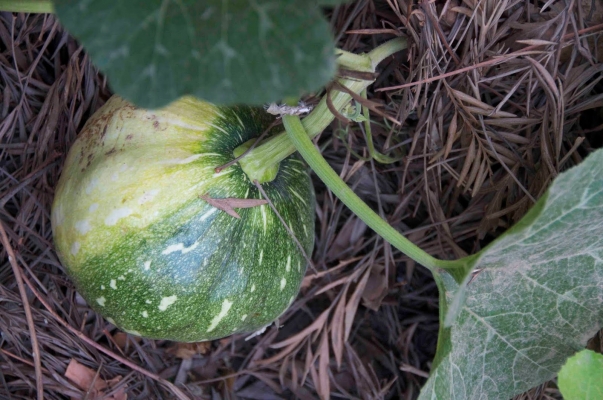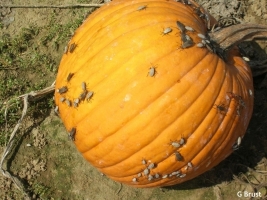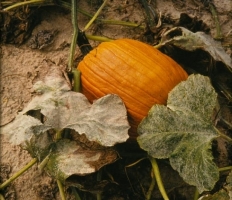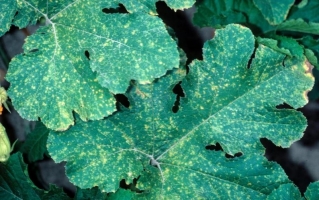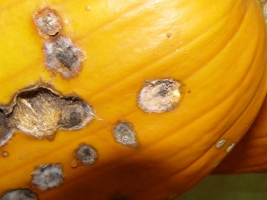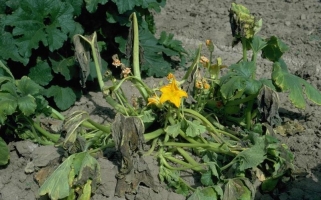Pusa vishwas: Released by IARI. Recommended for sub-humid climates. It has spherical fruits which are medium in size and has an average weight of 5kg each. The variety gets mature in 120 days. It gives an average yield of 80-100qtl/acre.
Pusa Alankar: Released by IARI. Early hybrid variety which gets mature in 40-50 days. It gives an average yield of 95-100qtl/acre.
Arka Chandan: Released by IIHR, Bangalore. It has round shaped fruits which contains orange color flesh. The fruit has an average weight of 2-3kg each. The variety gets mature in 115-120 days. It gives an average yield of 135qtl/acre.
Other state varieties:
PPH-1: Released in 2016. Extra early maturing variety. They have dwarf vines, short internodal length and dark green color leaves. It contains small fruits which are round in shape. The fruit is mottled green in color when immature and at maturity stage it becomes mottled brown in color. Fruit contains golden yellow color flesh. It gives an average yield of 206qtl/acre.
PPH-2: Released in 2016. Extra early maturing variety. They have dwarf vines, short intermodal length and green color leaves. It contains small fruits which are round in shape. The fruit is light green in color when immature and at maturity stage it becomes smooth brown in color. Fruit contains golden yellow color flesh. It gives an average yield of 222qtl/acre.
Punjab Samrat (Released in 2008): They have medium long vines, angular stem and dark green color leaves. It contains small fruits which are round in shape. The fruit is mottled green in color when immature and at maturity stage it becomes pale brown in color. Fruit contains golden yellow color flesh. It gives an average yield of 165qtl/acre.
CO 2: Released in 1974. The average weight of each fruit is 1.5-2kg. The fruit contains orange color flesh. It gives an average yield of 100qtl/acre. The variety gets mature in 135 days.
CO1, Arka Suryamukhi, Pusa Viswesh, TCR 011, Ambilli and Arka Chandan are the important varieties of Pumpkin.

